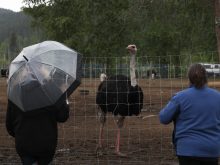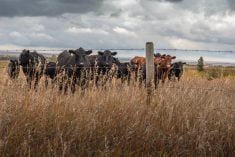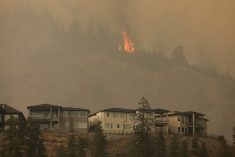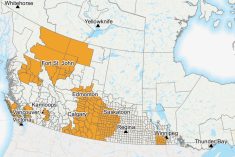Reuters — The Asian giant hornet — an invasive, predatory insect dubbed the “murder hornet” — has been seen in the Vancouver area and may pose a threat to the beekeeping industry and potentially to people if it establishes there, a U.S. official said Monday.
The stinging Vespa mandarinia can grow as large as 2-1/2 inches (6.35 cm) in length and is native to Southeast Asia, China and Taiwan.
According to British Columbia’s agriculture ministry, a nest was found and destroyed last August at Nanaimo on Vancouver Island, and a single specimen of the hornet was found in November on the B.C. mainland, at White Rock.
Read Also
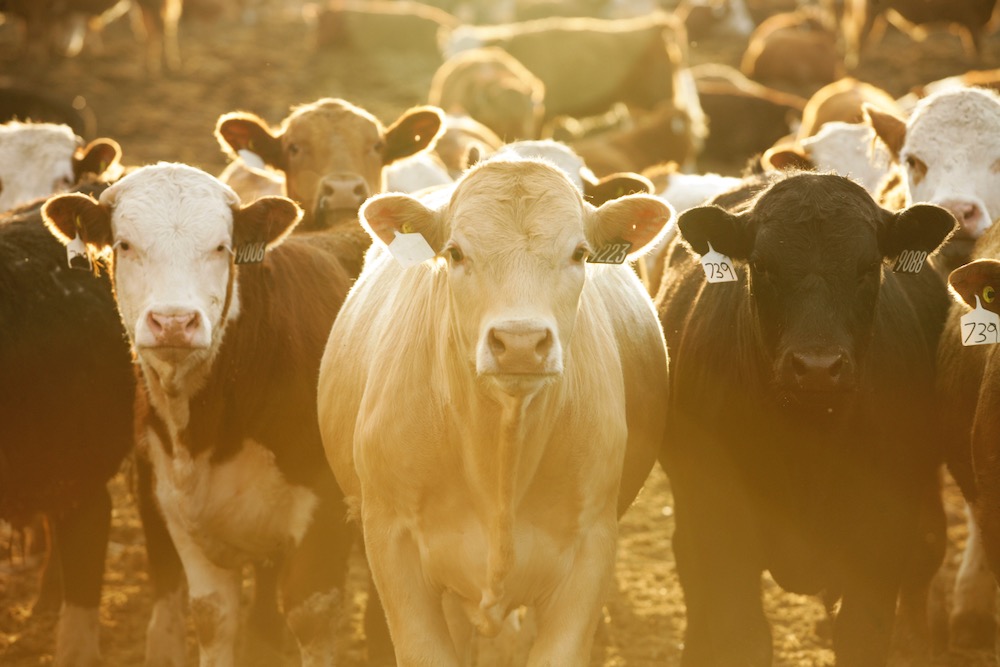
U.S. livestock: Cattle futures drop on Trump call for lower prices
Cattle futures on the Chicago Mercantile Exchange dropped sharply on Wednesday, reacting to comments from United States President Donald Trump…
On the U.S. side of the border, individual specimens were found in December near Blaine, Wash., just south of White Rock, according to Sven-Erik Spichiger, managing entomologist at the Washington state agriculture department.
Those findings indicate a “probability” that nesting hornets are overwintering in the area, the province said in March, noting wooded habitat offers suitable nesting grounds.
The “murder hornet” presents a danger to agriculture and the apiary industry, Spichiger said, because the insect is known to attack honeybees, with a few of the hornets capable of wiping out an entire hive in hours.
“The hornets enter a ‘slaughter phase’ where they kill bees by decapitating them. They then defend the hive as their own, taking the brood to feed their own young,” according to the Washington state department of agriculture website.
“Pollination is a huge part of agriculture and the agricultural systems we have here in the United States. And so if this were to become well-established and then start spreading, it could be pretty catastrophic,” Spichiger said.
Also. if provoked, “an Asian giant hornet can sting you multiple times and deliver larger doses of venom just because of the size of them. The venom itself is fairly toxic and creates localized necrosis around the wound so you’ll see melting flesh around the wound,” he told Reuters.
“What we’re told from the literature is that most people can survive one or two stings,” he said. “But if you sustain multiple stings, the necrosis and the venom will actually start getting into your bloodstream and will start working on your organs. And multiple stings could literally be fatal.”
Scientists don’t know for sure how the murder hornet made its way to the region. The most likely scenario is that it arrived on a container ship. Intentional transport of the bug into the United States would violate federal law.
Following the discovery of the first hornet, a web page set up by Washington state agriculture officials to report additional sightings of the insect has received several hundred reports, Spichiger said.
British Columbia’s agriculture ministry also wants people in the region who may have seen Asian giant hornets to report sightings to the Invasive Species Council of B.C., with photos if possible.
The ministry noted several large insects common to the region — such as yellow jackets, bald faced hornets, elm sawflies and horntail wasps — could be mistaken for Asian giant hornets.
While Asian giant hornets do not generally target people, pets or large livestock, they can attack when threatened or if their nest is disturbed.
“We really don’t want any private citizen trying to mess with an Asian giant hornet nest. Typical beekeeping attire will simply not protect you. The stinger on this insect is six millimeters long and will go readily through most clothes,” Spichiger said.
— Reporting for Reuters by Omar Younis; writing by Dan Whitcomb. Includes files from Glacier FarmMedia Network staff.



